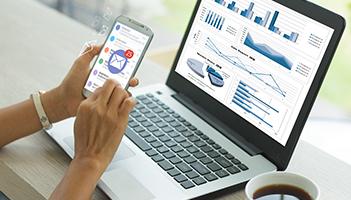Most of us know that email is one of the most effective tools marketers have to nurture their audience, gain new leads, and drive conversions. Getting the most out of email, however, requires the right email marketing strategy, and developing that strategy involves more work than just setting business goals and determining topics.
The email marketing approach that works best for your organization will vary based on numerous factors that influence audience engagement and deliverability. You also have to go beyond a one-size-fits-all approach to make sure you’re addressing the various people involved in the buying process. Keeping these multiple personas in mind is crucial to helping you tailor your efforts to meet their specific needs while improving the chances of your emails getting delivered, opened, and read.
Since deliverability best practices and audience preference are fluid, finding the right path toward email marketing success can be daunting. Today, we are on a mission to remove the mystery involved in creating an effective email marketing strategy and equip you with the tools and knowledge you need to figure out a recipe that gets results.
Keep reading to learn how to use data, behavior, and customer personas to develop an email marketing strategy that improves inbox placement and captures your audiences’ attention.
Segment Your Audience to Improve Personalization and Deliver Relevant Content
Personalizing your marketing efforts is necessary if you want to maximize engagement and, in turn, improve your inbox placement. You can’t expect all of your contacts to be at the same decision stage or share similar pain points, and sending an email that doesn’t resonate can result in poor engagement or, worse yet, get sent to the spam folder. Delivering content that matches your recipient’s needs and preferences will prove your business’ value and help them progress from one stage in the buyer journey to the next.
Segmenting your contacts appropriately is the first step toward delivering a more personalized customer experience. Although segmentation has long been regarded as a huge undertaking by marketers, grouping your contacts into lists doesn’t have to be laborious and time-consuming. The right marketing automation tool (such as Act-On), removes much of the work involved by enabling you to automatically segment your contacts based on their behavior as well as the information you’ve gathered through form fills.
While there are dozens of ways to segment your contacts, a good place to start is by their position at their organization and stage in the sales cycle. Once you begin to engage with your contacts and learn more about their specific preferences, you can use this information to segment them into a new list and enter them into a new automated email campaign.
Look at Your Data to See What’s Working (and What’s Not)
Accurate and thorough customer personas provide a good starting point toward delivering personalized emails that resonate with your audience and motivate engagement. Data, however, enables you to go the extra mile and get even more granular with your efforts by providing visibility and insight into whether your subject lines, CTAs, graphics, and other email elements resonate with your recipients.
You can begin collecting data and gain even more detailed insights into your customers’ preferences by conducting A/B testing for every email you send. Send at least two versions of each email to measure which components inspire your audience to open and click through. Once enough time has elapsed and you’ve gathered sufficient data, use these insights to revise your emails to highlight the components that seem to be driving engagement for your audience.
There are plenty of analytics tools available, so you don’t have to be a data scientist to thoroughly measure the performance of your emails. If you’re using Act-On, Data Studio allows you to view delivery, bounce, and open rates and click maps so you can gain a more detailed sense of how your content is influencing the deliverability and engagement of your emails.
Avoid Email Fatigue By Monitoring Audience Behavior
Email fatigue is a real thing, and (in addition to negatively impacting engagement) it can result in an uptick of opt-outs and spam complaints, which are the two fastest and most common routes to a damaged email reputation. Monitoring audience behavior for spikes in spam complaints, emails, and lack of engagement can help you adjust your timing and cadence to avoid bombarding your audience with unwanted emails in the future.
In addition to considering audience preferences and engagement, you can avoid causing email fatigue by limiting your sending during certain times of the year when your audience is likely to receive an influx of emails, such as the holiday season. Another good rule of thumb to prevent email fatigue is to avoid over-sending in the first place. Even if your contacts sign up to your email list and choose to receive communications from you, they might change their mind if you start flooding their inbox. Therefore, it’s best practice to use forms to learn more about what and how often they want to hear from you.
Continuously Revisit Your Strategy for Best Results
As with all your marketing efforts, your email marketing strategy should never remain stagnant. Your customers and best practices for deliverability are constantly changing, so it’s best to periodically revisit your email marketing strategy to reflect these changes for optimal results. This will help you stay ahead of the competition and ensure that you’re always getting the most bang for your buck when it comes to your email marketing efforts.
If you’d like to learn more about how you can use data, behavior, and personas to develop an effective email marketing strategy, check out our eBook Deliverability 101: Your Guide to Developing an Email Strategy That Improves Deliverability and Drives Results (also linked below).
